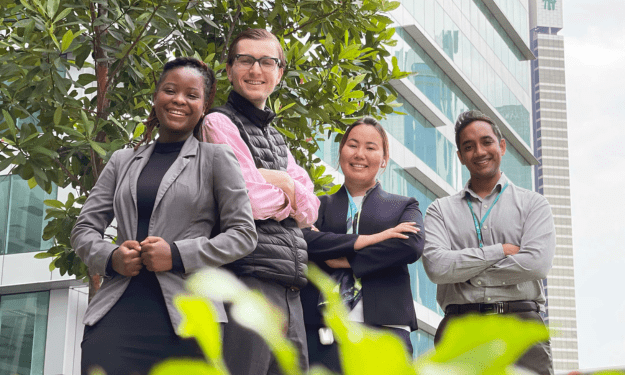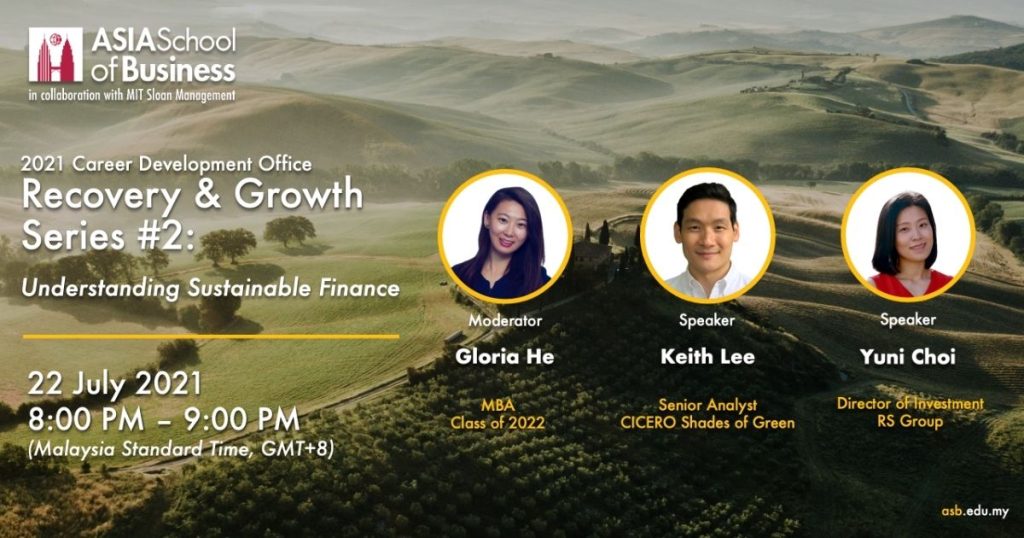As companies and the financial world moves towards becoming more responsible and transparent to their members and stakeholders than ever before, a rise in sustainable finance initiatives can be seen. What does the future hold and what kind of career opportunities lie in this space? This article explores these questions.
Everybody has been talking about sustainability. Left and right, companies are announcing their commitment to reaching net-zero carbon emissions by 2050. While transitioning businesses to sustainable practices entail heavy investment, investors see these financing requirements as a new opportunity to generate more return.
According to BloombergNEF, the global sustainable debt market exceeds USD 730 billion in 2020, despite the pandemic, and has a 61% compounded annual growth rate for the past eight years. This showcases that there is an increasing demand to finance corporate sustainability initiatives. With such demand and growth, is sustainable finance an emerging industry MBA students should consider entering?
To shed more light on sustainability and sustainable finance, the Career Development Office at Asia School of Business (ASB) recently hosted a panel session inviting Keith Lee, Senior Analyst of CICERO Shades of Green, and Yuni Choi, Director of Investments of RS Group, as panelists to share about their experiences on sustainable finance with Gloria He from the MBA Class of 2022 as the moderator.
What is sustainability?
Before jumping into sustainable finance, let’s understand what ‘sustainability’ is? Sustainability or sustainable business ensures our actions stay within the planetary boundaries and a fairer distribution of wealth. At the same time, sustainability is a term people hear in conjunction with Environmental, Social, and Governance (ESG) issues in businesses.
During the webinar, Keith Lee focused and elaborated on the environmental issues. Most familiar to our ears is climate change, but he emphasized that there are other environmental issues. Including climate change, he highlighted nine planetary boundaries (from ocean acidification to land-system change, among others) proposed in 2009 by research scientist led by Johan Rockström that defines the Earth’s limit and how it can be “a safe operating space for humanity.”
Next, Yuni Choi zoomed in on the social aspect of sustainability, where she shared that we are experiencing a lot of inequality which causes uncertainties and volatilities. Alongside the environment, sustainability must also take into account a fairer distribution of wealth. A good example is that senior citizens can access basic goods and services in the community. There is a lot to understand about sustainability, but as the experts describe it, sustainability is simply doing good for the environment and people around us.
Diving into sustainable finance
These ESG issues create risks that are increasingly recognized as material to businesses. Therefore, it opens opportunities to financial managers lending to and investing in these businesses. Keith illustrated this in terms of the automobile industry, where he asked, “Would you invest in a car company that has no plans to produce electric vehicles?”
Producing a petrol-based vehicle that contributes to high levels of CO2 emissions and creates a risk to the environment opens an opportunity for investment in electrification. Keith simplified this scenario as transition risk arising from global efforts to address climate change, resulting in changes in regulation, technologies, and market conditions.
Yuni was positive about the increasing inflow of assets under management (AUM) in sustainable finance. However, the funded assets are still in the ‘light shades of green’, where most of the assets are on an exclusionary approach, such as funding companies that transition out from the tobacco industry instead of an inclusionary approach, such as a company entering the electric vehicle industries.
She believes there will be more robust ESG activity and greater focus on promoting companies with better ESG performance. She summarized it as impact investing, which means investing intentionally to create a positive social and environmental impact.
Yuni shared that we are still well below USD 1 trillion of investment. However, based on the latest data where investment stands at around USD 730 million, shows that there have been a ton of growth in this area of finance. A great example of ones of these funds is SJF Ventures III, where the fund has achieved tangible impact in six themes: clean energy, circular economy, health, education, workforce, and food.
As Keith shared, in layman’s terms, sustainable finance is “investments that are trying to do less harm, while mitigating environmental risk” and is aimed, as Yuni expressed, “towards investments with more positive impact.”
Does going sustainable mean less return?
Yuni has encountered the question of responsibility and return a million times and believes there is no trade-off between the two. There are two ways to look at it. First, investors are getting savvy and looking at an investment long-term and considering ESG issues. Financial models consider the impacts of issues such as the diversity of the board of directors, the carbon emissions of companies, and so on, in each business.
For example, a company who is polluting the environment may in the future, be regulated and pay a carbon price, deteriorating its profitability and affecting its long-term value. Second, established private equity firms and asset management are joining the bandwagon. Last year, BlackRock, a globally renowned investment manager, jumped into impact investing and is now a leader in the field.
Sustainability doesn’t degrade future returns because investments are supported with a logical point of view in investing, and established institutions are also paying more serious attention to impact investing.
Sustainability vs Greenwashing
Keith shed light on ‘greenwashing,’ defining it as “claims about sustainability that are blatantly not true”, which can be willful or through ignorance. Given the growing attention to sustainability, there is a temptation to slap ‘eco’ or ‘green’ in front of everything. Regulators, investors, and banks are now expecting practices and strategies to become sustainable, increasing the pressure for companies to represent themselves (accurately or not) as sustainable.
Keith emphasized that we have to make sure that the companies’ claims are meaningful from a scientific perspective. A great example is achieving the Paris Agreement goal to limit climate warming to 1.5 degrees Celsius by 2100. Companies were under pressure to contribute towards this “1.5 degrees” and started announcing that they will achieve net-zero carbon emissions by 2050.
But we can assess the company by asking, is the target meaningful? Have they set interim plans – for example, targets in 2030? How serious are they in achieving these targets? Are the performance measures linked to the remuneration of senior executives?
With a multilayer requirement around sustainability, companies may ‘greenwash’ sustainability claims, but for those in the field, we can equip ourselves with scientific facts and scrutinize the company’s strategies and plans, holding them accountable to serious actions to achieve those targets while reducing greenwashing.
What are the opportunities in sustainability?
Yuni shares that there are three types of organizations. First, there are the asset managers like private equities and venture capitals. Second are asset owners like family offices, foundations, and pension funds. Lastly, there are the service providers like the Big Four, ESG analytics, and the like.
In terms of roles, she sees two types of roles. One is an investment-related role, and the other is an impact measurement role – supporting the investment team. As the industry is booming, securing opportunities lies in building a network, putting yourself out there, and researching sustainable finance.
Keith highlighted interdisciplinary knowledge, as you need to understand finance and economics and how those link to environmental and social concepts. He also emphasized sharp skills such as machine learning and artificial intelligence because the industry lacks data to support analysis and institutions are looking for alternative data sources and analyzing unstructured information.
Final takeaways
As of writing this takeaway article, I am currently on the journey to sustainable finance, working as a summer associate in sustainability at a major commercial bank. My understanding of sustainability at the beginning of my journey was simply that sustainability is all about “reuse, reduce and recycle”, and supporting less plastic waste.
My perspective has since expanded. I’ve seen interrelated technical information on different industries’ impact on ESG, which eventually affects the bank’s overall profitability. Step-by-step, as sustainability leaders emerge and more regulators support sustainability, sustainability will become an integral part of doing business and our day-to-day living.





